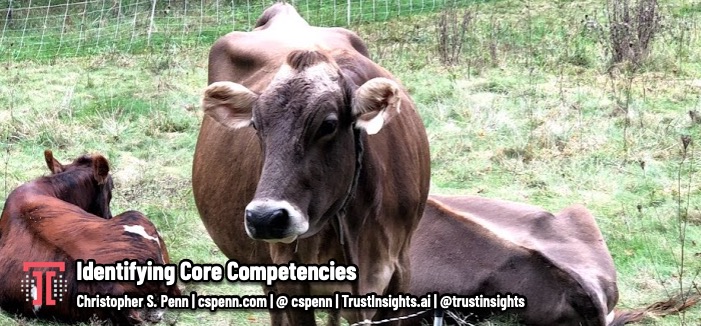
Tuong asks, “Hello friends, I have 1 situation: Company X has 20 years of experience in making agricultural products (rice) and supplying them to customers (production, distribution). CEO sees the growth potential of the livestock sector in the next 5 years, CEO of the company wants to expand the company’s core competencies into the livestock sector. So will the CEO decide to do M&A or set up a completely new company to add this core competency quickly? Now the company will have 2 core competencies, right? Thank you.”
This is an interesting question because it very much depends on what the core competency of the company is. Is it truly rice? Does the company have so much experience and domain expertise in rice that very little of that knowledge will transfer over?
One of the challenges people face with core competencies is identifying what their actual core competency is. Prahalad and Hamel defined the term in 1990 in Harvard Business Review as a combination of skills and resources that give a company a competitive advantage.
Here’s where people mess up core competencies:
What you do isn’t the core competency.
How you do it is.
Take a company like Amazon. They sell tons of stuff. Back in the late 1990s, when they were just a book store online, they began to sell things other than books, and they were lambasted in the press. Who would buy a coffee maker from a book store?
What Amazon’s management team recognized was that book selling was not their core competency. The logistics of ecommerce was, and that capability allowed them to sell pretty much anything online and get it delivered to people, like an autoclave for laboratories.
Another obvious example: what business is Netflix in? In 1999, Netflix appaeared to be in the mail order DVD business, and their announcements to start offering streaming entertainment were pronounced as the doom of the company. Again, the management team there recognized they were in the business of reducing friction between consumers and entertainment using the Internet, so first offering streaming and then offering original content both aligned with that core competency.
So in the example Tuong has given, the question I have is whether rice is their core competency, or bringing agricultural products to market – the production and distribution – is their core competency. If they truly are the biggest and best rice experts on the planet and they’re doing stuff like genetic engineering on rice, then yes, in that scenario, acquiring a livestock portfolio might be more of a stretch. A lot of the knowledge and domain expertise in their current staff might not be as easily transferable from, say, basmati to black sheep.
On the other hand, if their core competency is actually agricultural logistics, then rice, corn, sheep, cows – the product doesn’t matter as much as their capability to get products to market that is in some (difficult to copy) way better, faster, or cheaper than their competitors.
So the key question to ask is, what is the company’s actual core competency? Invest time and effort to understand that, and then the merger strategy will become clear – if you have a core competency that blends well with the acquisition, then you still only have one core competency. If you don’t, then chances are you’ll want the new acquisition to continue functioning as an independent entity, rather than try to mash it together with the existing company.
You might also enjoy:
- Mind Readings: You Need Passwords for Life in the Age of Generative AI Fraud
- Almost Timely News, January 14, 2024: The Future of Generative AI is Open
- You Ask, I Answer: Retrieval Augmented Generation for Tax Law?
- Almost Timely News, January 7, 2024: Should You Buy a Custom GPT?
- You Ask, I Answer: Retrieval Augmented Generation vs Fine-Tuning?
Want to read more like this from Christopher Penn? Get updates here:
 Take my Generative AI for Marketers course! |


Leave a Reply